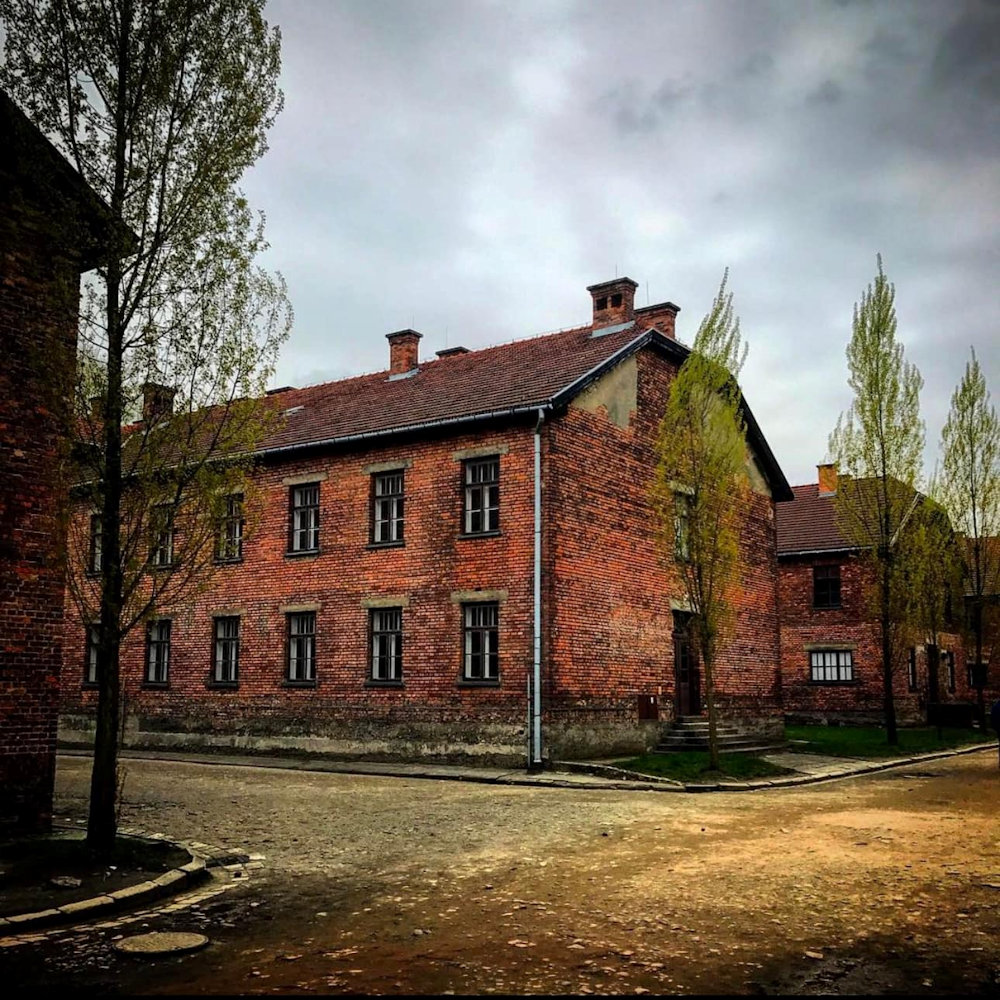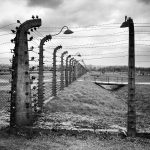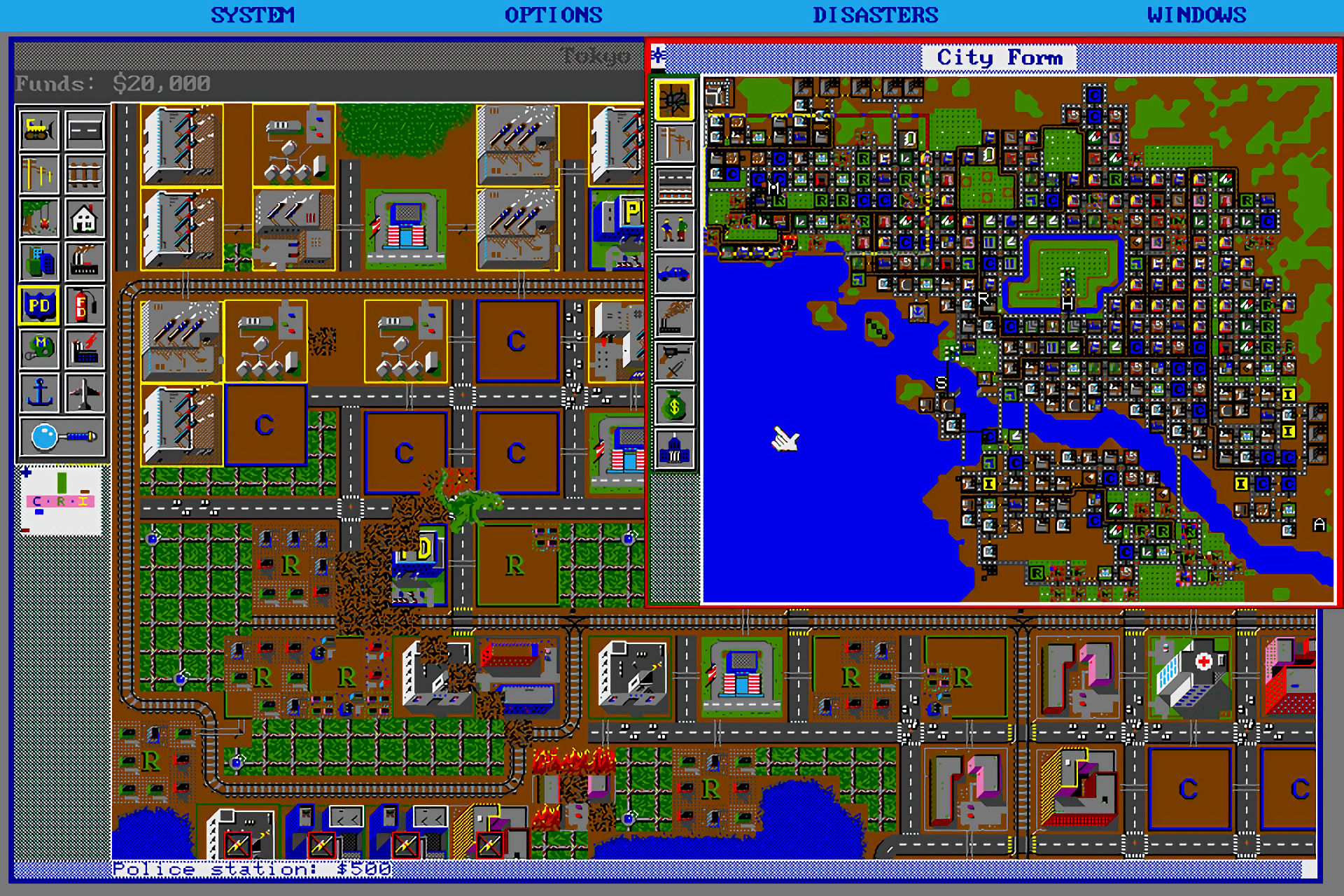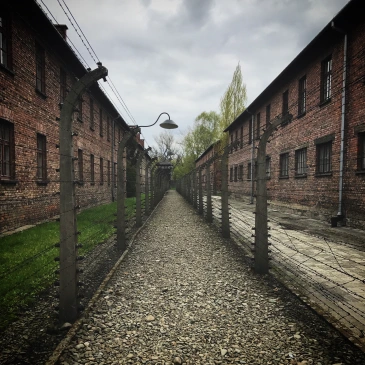
Just last week it was my privilege to accompany a lovely young lady to Poland for a few days of sightseeing. On the last day we were there we took a trip to the concentration and extermination camps at Auschwitz-Birkenau. I wasn’t sure exactly what to expect. I had been told by people who had been before to anticipate an eerie experience. “There’s no life there” was a typical warning, and very general gist of commentary from the people who had been before me; or who had spoken to others that had been. I’d heard that no birds visit the place where over a million men, women and children were murdered. It’d be wrong to say I was ‘looking forward’ to the experience, but I was anticipating an experience which I would never forget. That’s exactly what I got.
The temperature hovered around freezing when we arrived at Auschwitz-1 and we were taken for a short tour around the camp, into and out of the buildings. There, we saw exhibited, the horrors of the place. Photos of the arrival of prisoners who were then selected for either labour or death. Rows upon rows of shoes taken from men, women and children. The pots and pans and other household items which people brought with them to the camp; under the impression they were to begin a new life. And human hair. Bails of human hair. Which was shorn from the victims of the Nazi’s for use in wartime and textile industries.
I think that was what impacted upon me most from the main camp; that human beings were as sheep or cattle, to be killed and have their component parts rendered down into raw materials to be used as we would use the leather or wool from livestock. Does anything say dehumanised as much as treating people as we would animals?
Before we left this place we were taken to an ammunition bunker which had been converted into a gas chamber. This is one of the first places used to kill people using poisoned gas at Auschwitz. We stood inside and I looked up at the vent where, just decades previously, others would have looked to see granules of Zyklon B poured in. It was chilling. The impact lessened only by the other people on the tour sharing this space. Some were visibly impacted by being in such a place.
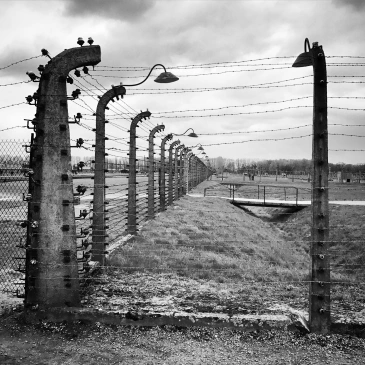
From here were took a short ride to Auschwitz 2-Birkenau. Unlike Auschwitz 1, which was a converted barracks, Birkenau was a purpose built linchpin of the Nazi ‘Final Solution’. A place designed and purpose-built for the extermination of Jews and others deemed unsuitable to exist in the Third Reich. It’s a space quite unlike any other. Most structures beyond the reception building either demolished or destroyed. The few remaining wooden buildings could be visited and showcased the conditions people like you and me were kept in. Seven hundred in a building big enough – by modern standards – to house a family of four. Sleeping on triple-bunks with seven or eight people on each level. Staying alive through harsh winters and freezing temperatures only as a result of shared body heat. We saw the area where the trains pulled in and the SS went through the selection process on new arrivals. People either selected to work – if they had relevant skills – or sentenced to immediate death in the gas chambers.
As we walked up the train lines towards the monument between two of the gas chamber / crematorium ruins, my companion turned to me and reiterated the words I’d heard about Auschwitz many times. “There is no life here. No birds fly.” At this I looked to my left and saw three small birds take flight; black shapes across the grey skies, between the stark ruins, towards the sparse trees. There was life.
And then, as we retraced our steps towards the reception building, I saw an image which shall remain my most abiding memory. Two Hasidic Jews, no more than seventeen or eighteen years old, walking along the railway tracks which conveyed so many of their kin to their deaths. Their younger siblings played games of balance along those same tracks. Those young people, along with the three small birds I saw were, to me, symbols of life returning from death. Of hope coming from hate. I’ll remember that image and that feeling for as long as I live. I left Auschwitz Birkenau, not sullen, but uplifted. Not with feelings of melancholy, instead with an understanding of humanities capacity to change for the better.
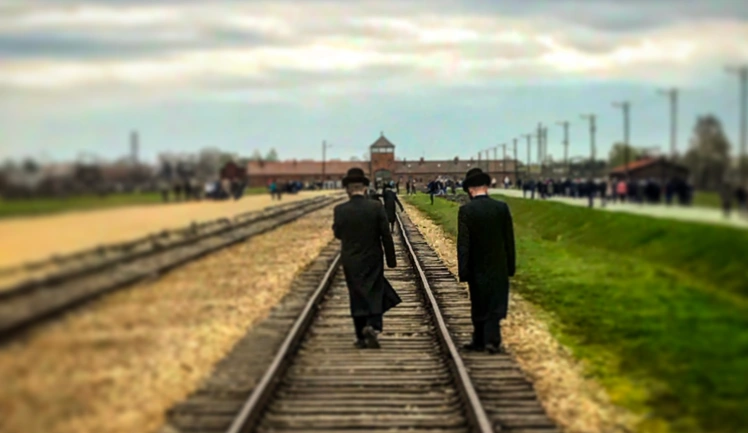

I believe that everyone should visit Auschwitz at some point in their lives. It needs to be a lesson that everyone is made aware of so that we do all we can to ensure such horrors never happen again.
‘Those who cannot remember the past are condemned to repeat it.’ – George Santayana

